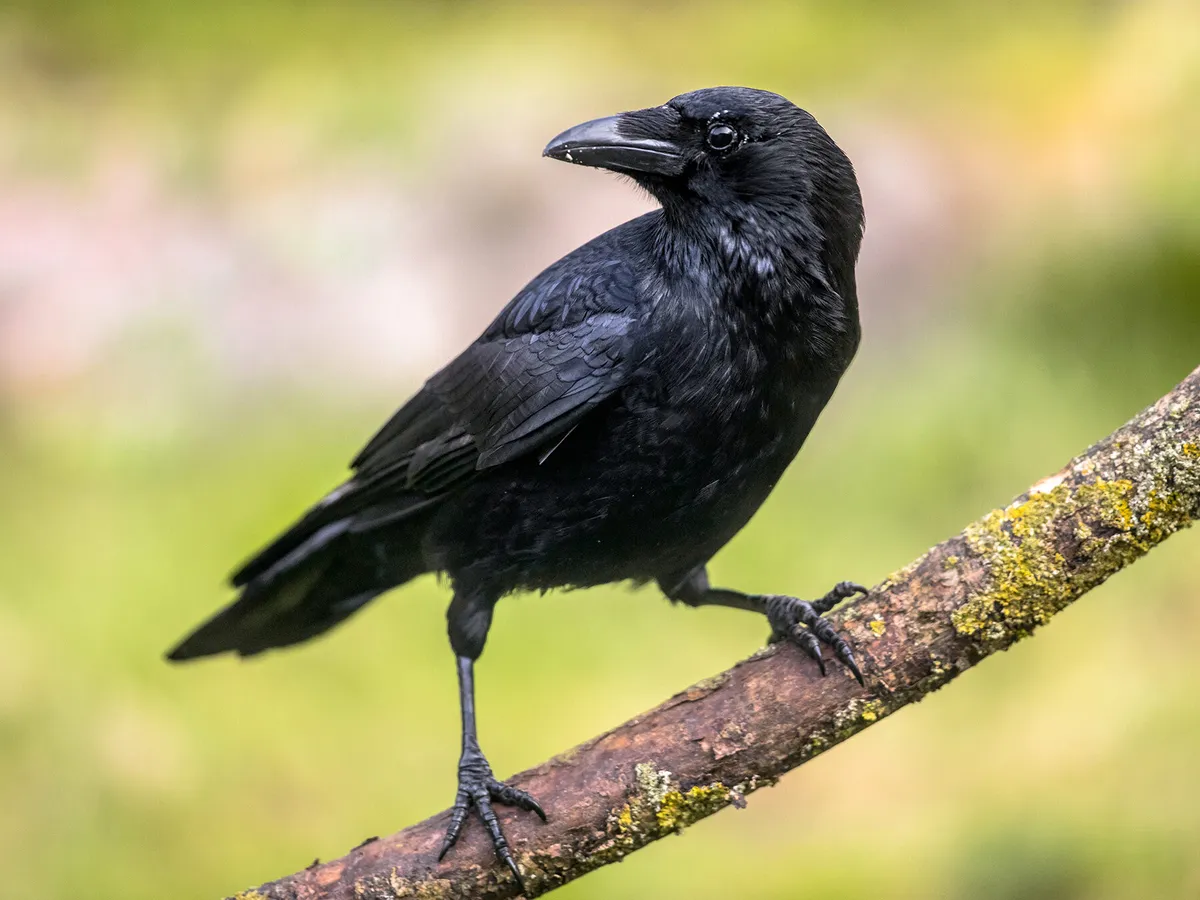
Carrion Crow
What does a Carrion Crow look like?
The adult carrion crow has gloss black upperparts with a green hue to the head and upperwings, morphing into a purplish hue across the neck, back and rump. These hues maybe difficult to observe and can appear as very subtle. The underparts of the bird are a dull black with тιԍнт feathering across the chest, belly and vent. The head is wide and flat across the crown and the black bill is medium length, thick and arched. The inside of the mouth is grey and the nostrils are covered in short bristle like feathers. The eyes are dark brown and legs dark grey or black. The tail and wing tips are square in shape. Males and females are similar. Juvenile birds lack gloss to the feathers which appear sootier in colour to the adult, with grey eyes and a pink colouration on the edges and inside of the bill.
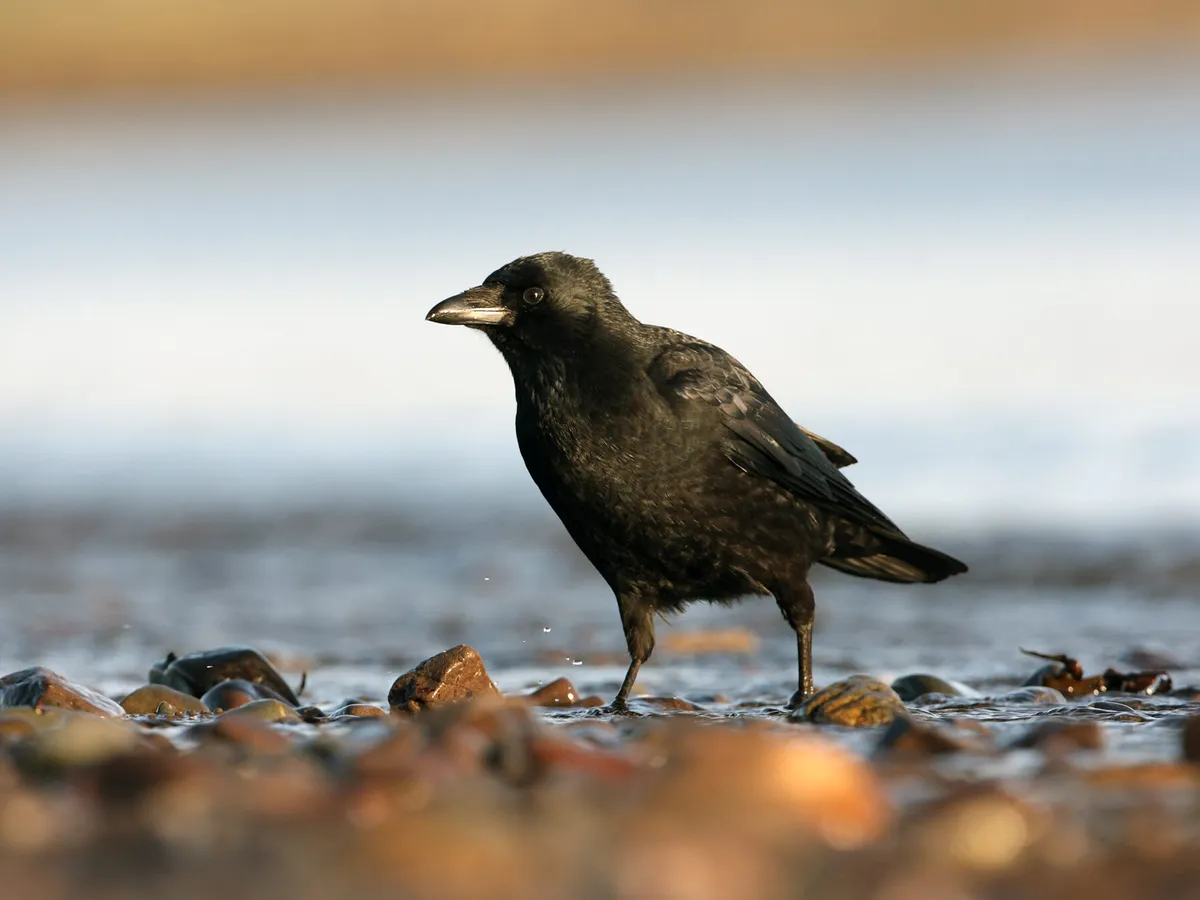
Carrion Crow perched
What does a Carrion Crow sound like?
The call is typically crow like being loud and harsh similar to, ‘caw – caw – caw’ or ‘craah – craah – craah’, often repeated.
Maxence Fouillade, XC642131. Accessible at www.xeno-canto.org/642131.
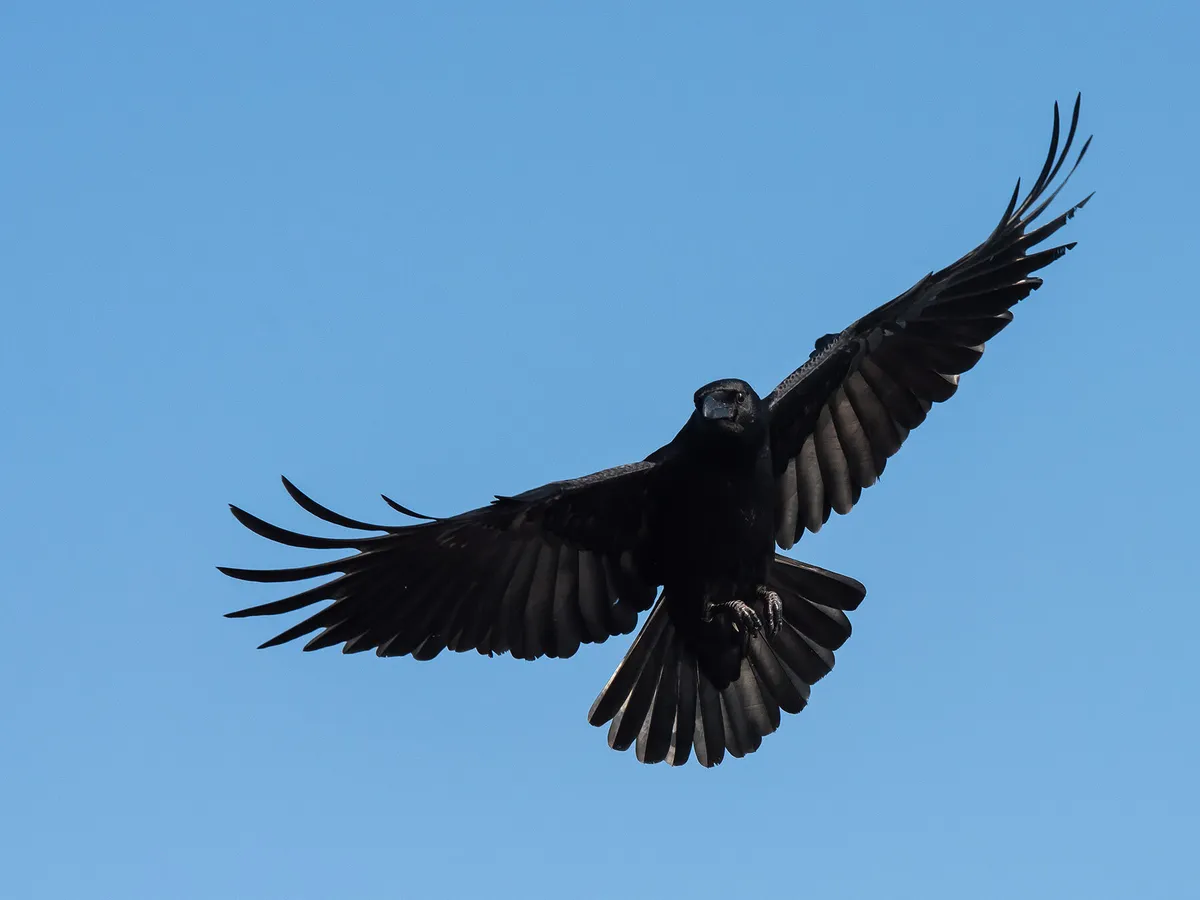
Carrion Crow in flight
What does a Carrion Crow eat?
The carrion crow forages for food mainly on the ground, taking worms, insects, seeds and berries and even small mammals and amphibians. It will also feed on others birds’ eggs and young as well as scavenging for scraps and carrion.
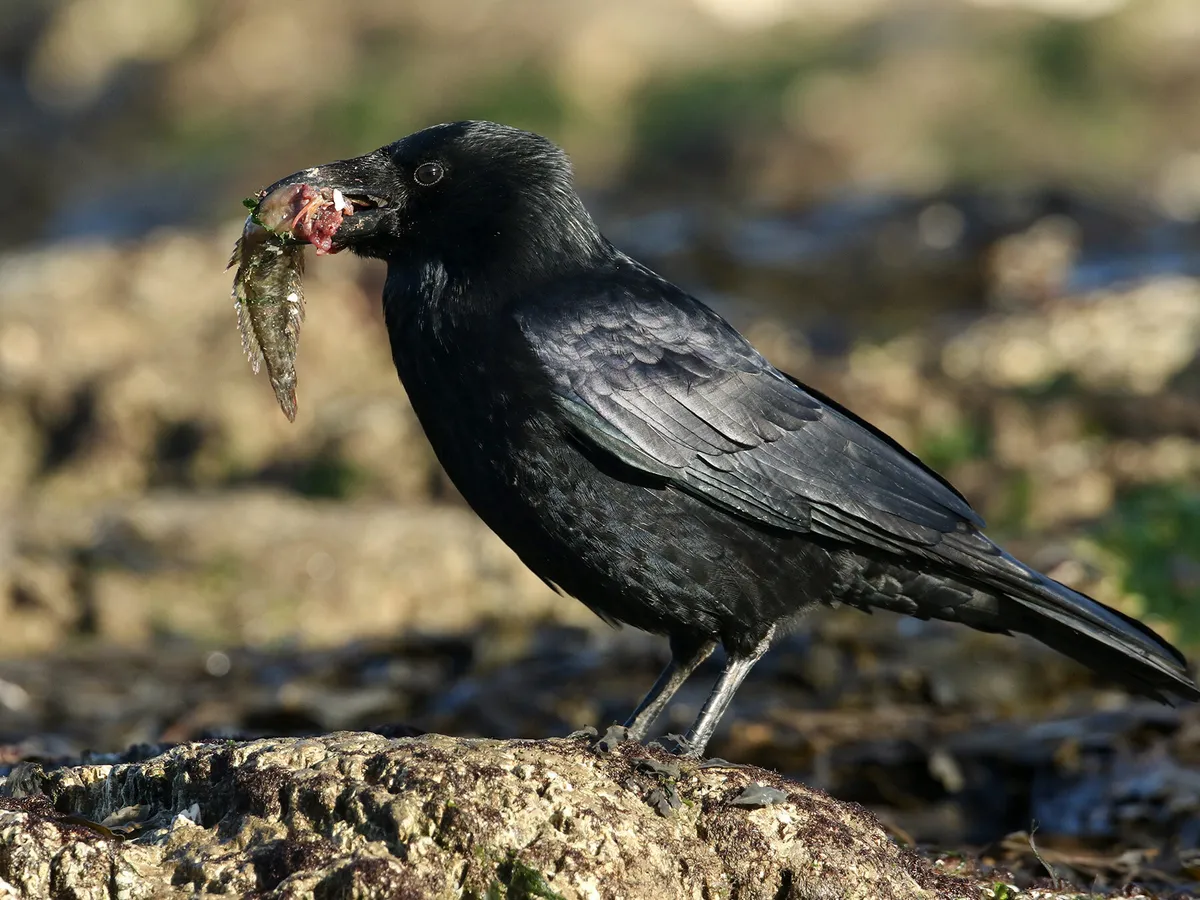
Carrion Crow with food
Distribution
The carrion crow is native to central and western Europe, including the United Kingdom. Its range also extends across central and eastern Asia from Kazakhstan to China and Japan, south into Thailand and north as far as the Kamchatka Peninsula in Russia’s northeast corner. There are two subspecies, with Corvus corone corone native to Europe and Corvus corone orientalis confined to Asia.
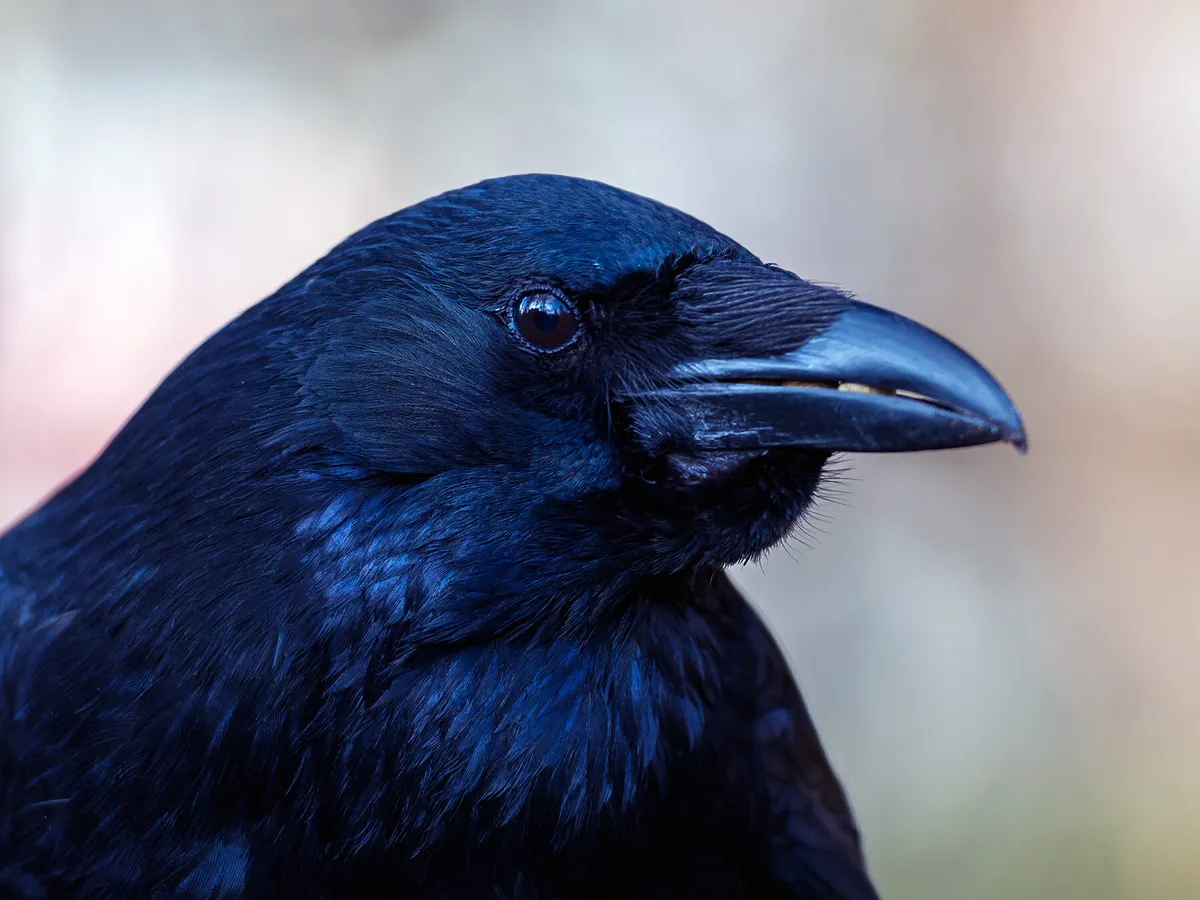
Carrion Crow profile
Signs and Spotting tips
Whilst on the ground the carrion crow is a proud, confident looking bird with an upright posture and determined, strutting, gait. In flight it can often be observed chasing off predators from its feeding grounds or nest areas during the breeding season and will even attack birds of prey. A relative loner it is usually spotted on its own or as a pair, although it will occasionally form small flocks with others of the same species. It has a wide variety of natural habitats including farmland, wetlands, moorland, woodland and open countryside of all description provided there are sufficient trees for roosting and nesting. Of all their habitats they are most commonly found in urban and suburban areas with parks and gardens, particularly within Europe.
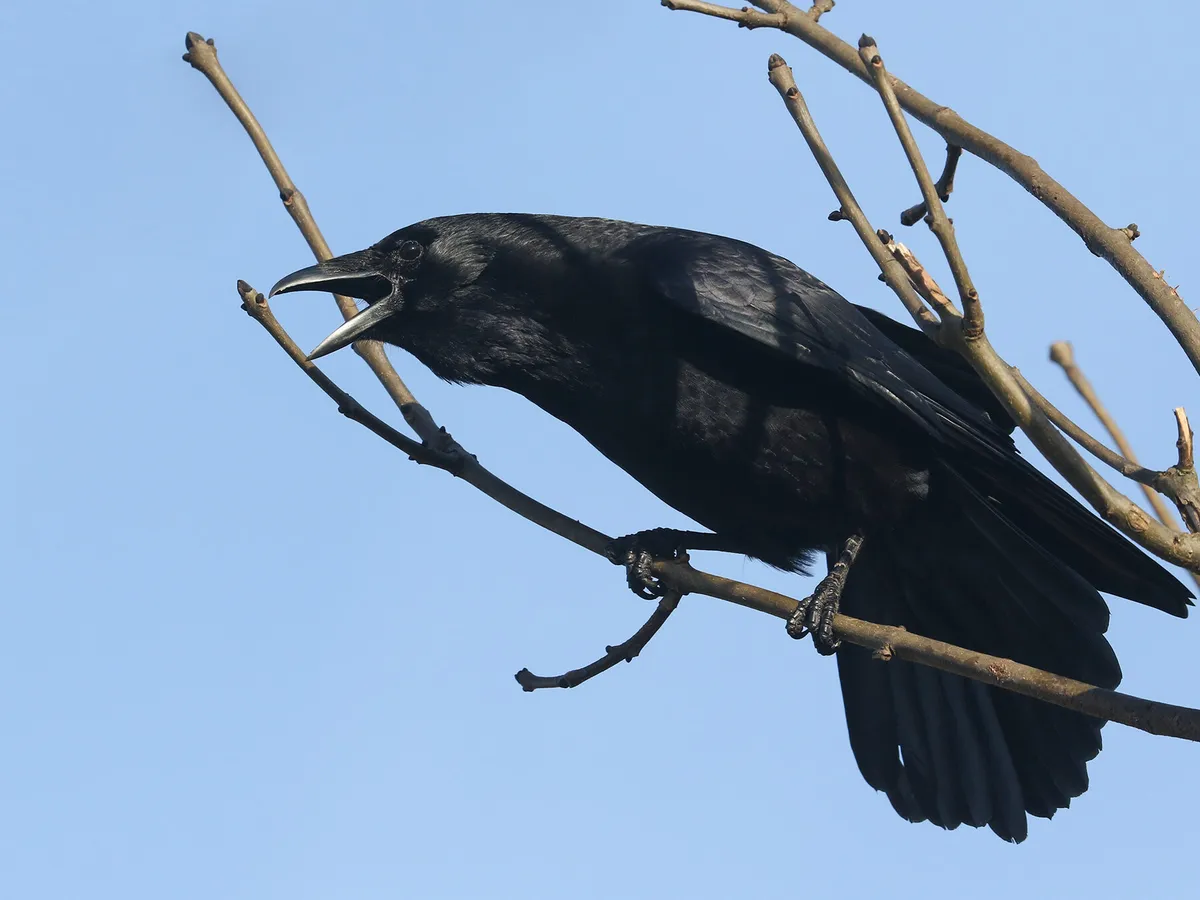
Carrion Crow calling
Breeding
Carrion crows are monogamous, often pairing for life. During the breeding season a large nest is constructed by the male and female from sticks and twigs high up in a tree or occasionally on a cliff top. Dependent upon geographical location one brood of 4 – 6 brown speckled blue eggs is produced annually between March and June and incubated by the female for up to twenty days. Fledging occurs after one month.
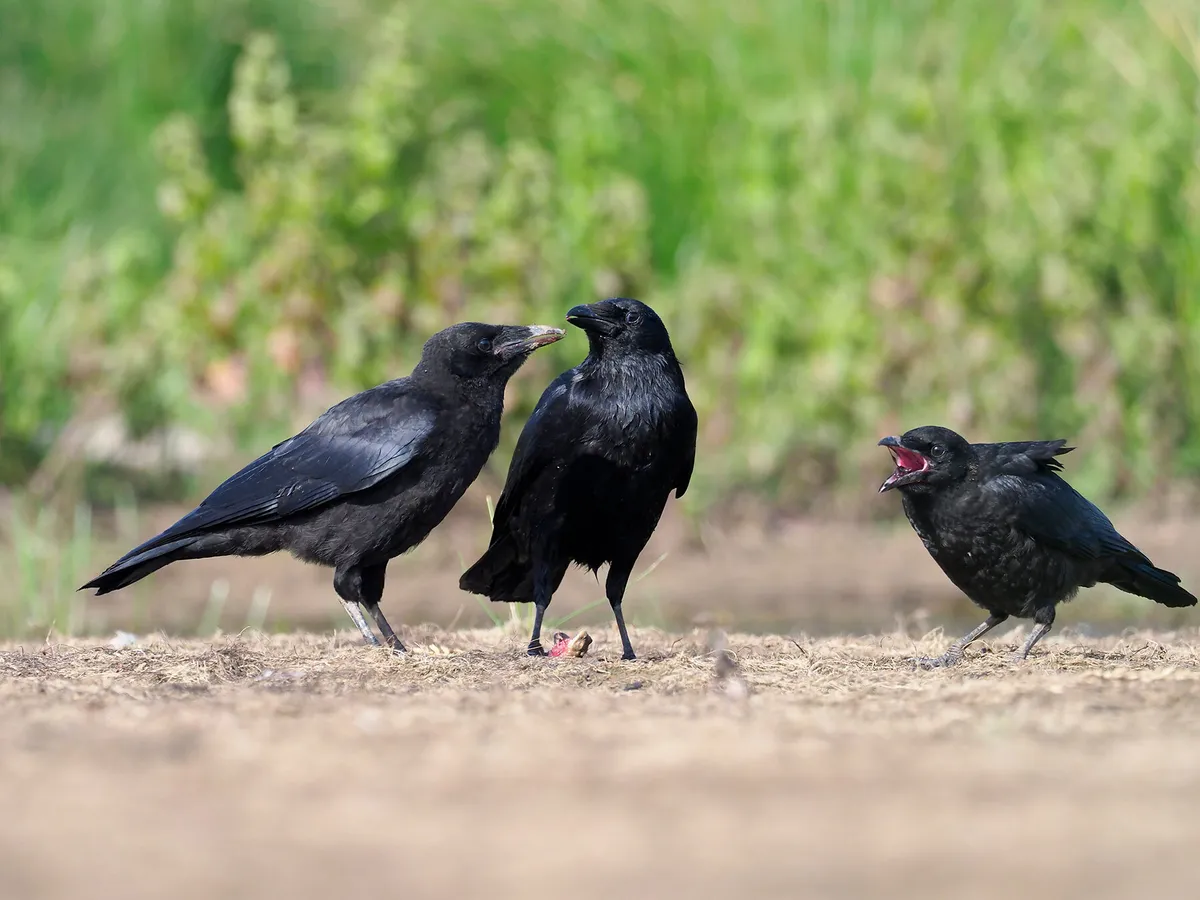
Carrion Crow with young
How long do Carrion Crows live for?
The average life expectancy of a carrion crow is between five to ten years. They have few predators and some ringed crows have been recorded as reaching twenty years of age.





